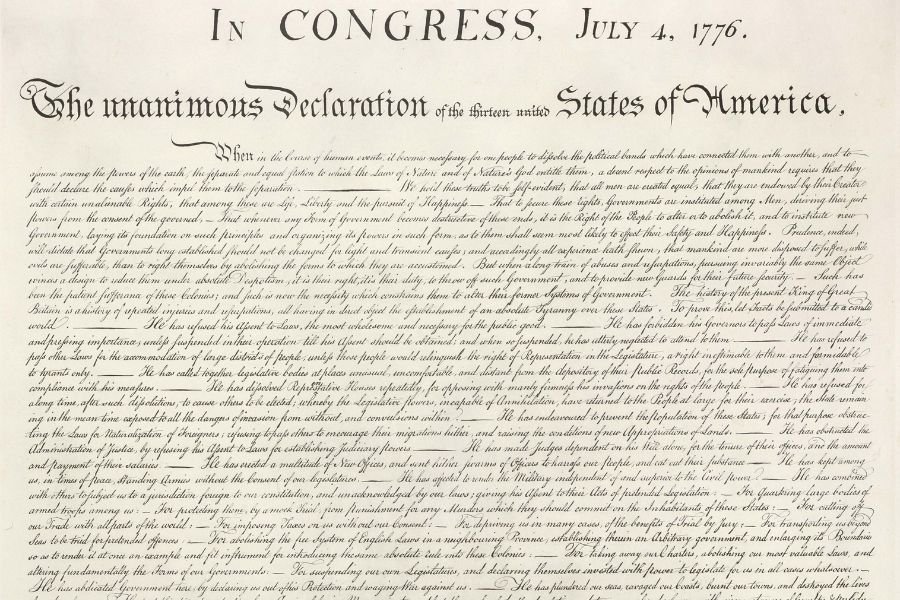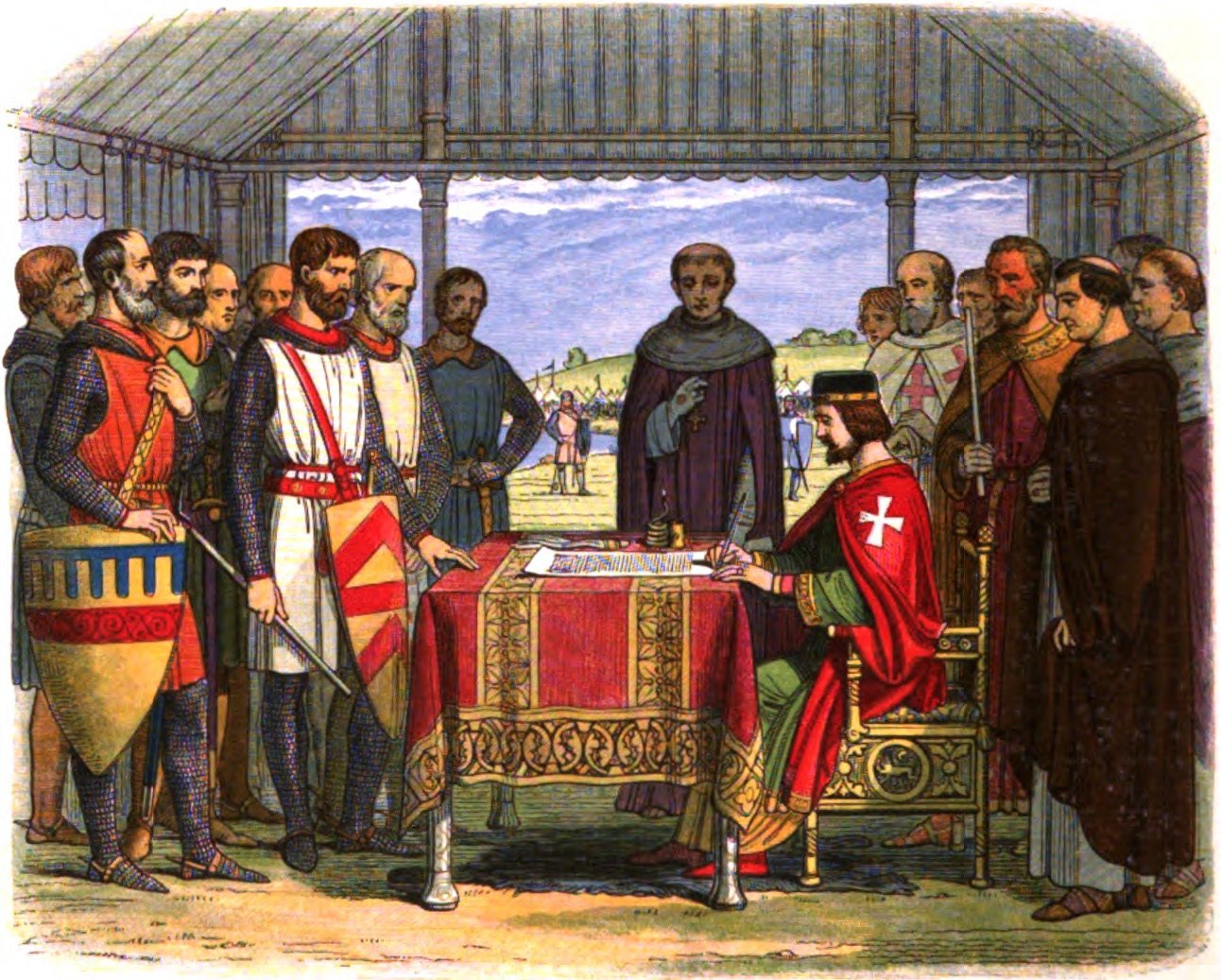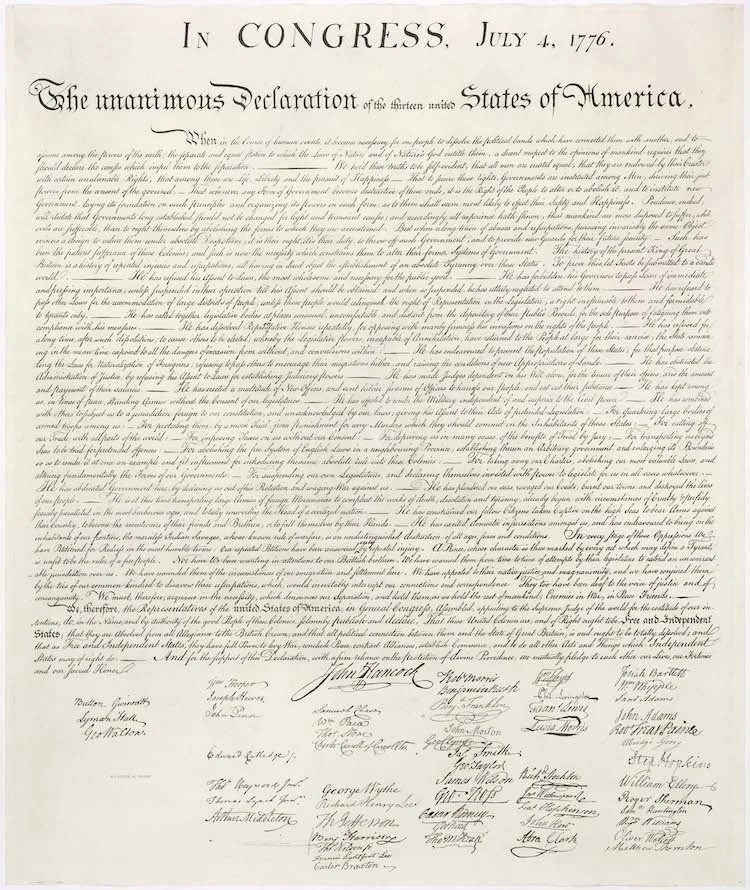
US Declaration of Independence
The documents listed here were created prior to the 20th century. They are both legal documents and literary or other cultural documents that influenced society’s perception of the value and domain of human rights.
This list is not exhaustive, but does illustrate some of the historic inspiration for what we consider human rights today.
Primary Source Documents
The Code of Hammurabi, established in the Babylonian region of Mesopotamia, dates back to 1754 BCE. It is one of the world's oldest and most complete legal codes.
King Hammurabi was the sixth king of the First Babylonian Dynasty. His code worked not only to compensate the victims of crimes, but also to punish perpetrators. The document contains the earliest example of the legal principle of ‘innocent until proven guilty.’
King Hammurabi's legacy can still be seen today. In fact, in the United States Supreme Court building, a depiction of Hammurabi is carved into the marble relief alongside twenty-three other great lawmakers in history. Read document >
Cyrus the Great, founder of the Persian Empire (modern-day Iran), issued the clay document known as the Cyrus Cylinder in 539 BCE. After his armies conquered the city of Babylon, Cyrus used the document as a form of propaganda against the recently conquered king Nabonidus. It scorns the fallen leader and praises Cyrus, describing how he freed many people who were held captive as slaves in Babylonia.
Many historians view the cylinder as an early human rights document, as it freed people from slavery and established racial, religious, and linguistic freedom under Cyrus’s rule. Read document >
The Constitution of Medina, written on behalf of the Islamic prophet Muhammad in 622 CE, outlines the rights and duties of the people living in the city of Medina (present-day Saudi Arabia). The document also regulates relations between Muslims and other communities on the basis of religion (as opposed to ethnicity or tribal affiliation).
The constitution protects all inhabitants of Medina, regardless of religion, and explicitly states that Jews and Muslims can practice their religions freely. Many historians consider the Constitution of Medina to be the first document in history to establish religious freedom as a right (though earlier documents, such as the Cyrus Cylinder, also mention religious freedom). Read document >
Many historians view the Magna Carta as one of the earliest Western legal developments in the area of human rights. Signed by King John of England in 1215, the document served as a peace agreement between the King and a group of barons who wanted to limit taxation and protect their rights. It guarantees certain individual rights, including the right to trial by jury – as long as the subject was a property-owning man.
Despite the fact that these rights were not extended to the common man, the Magna Carta remains one of the earliest examples in the West of the principle that everyone, including the monarch, is both subject to and protected by the law. Read document >
The English Bill of Rights was signed into law in 1689 by William III and Mary II of England. Many historians view the bill as a major stepping stone to modern human rights texts. The bill limits the power of the monarchy and outlines several constitutional and civil rights, including freedom of speech in Parliament and the right to bear arms for self-defense. Its authors were likely inspired by philosopher John Locke, who believed that the role of the government is to protect the ‘natural rights’ of its citizens.
By creating a constitutional monarchy, the document strengthened the rights of the individual and greatly weakened the power of the king and queen, leading to the largely ceremonial role of today’s British Royal Family. Read document >
The US Declaration of Independence explains the Thirteen Colonies’ decision to separate politically from Great Britain. It was written primarily by Thomas Jefferson and ratified on July 4, 1776 by the Second Continental Congress. The document served two purposes: to air grievances against King George III and to assert several natural rights, including “Life, Liberty and the pursuit of Happiness.”
The text of the Declaration focuses primarily on individual rights and the right to revolution when a government is no longer responsive to the needs of its people. The document has inspired many others around the world, including the Declaration of the Rights of Man and Citizen during the French Revolution. Read document >
Adopted by France’s National Constituent Assembly in August 1789, the Declaration of the Rights of Man and Citizen serves as the foundational text of the French Revolution. The document was drafted by the Marquis de Lafayette, a French military officer and close associate of Thomas Jefferson. Its basic principle is that “men are born and remain free and equal in rights.”
The declaration was based on "natural laws," or the inalienable laws afforded to an individual (man) as a birthright, including freedom to own property, liberty, and resistance to oppression. It still has significant influence on the ideals of democratic societies today. Read document >
Olympe de Gouges, a female French political activist and playwright, wrote the Declaration of the Rights of Woman and of the Female Citizen in 1791 in direct response to the Declaration of the Rights of Man and Citizen. The document sheds light on the failure of the French Revolution to extend its ideals beyond men and demands political and legal equality for women.
De Gouges was an outspoken critic of the government during the revolution’s “Reign of Terror” from 1793 to 1794. As a result, she was the only female to be executed for her political writings during this period. Read document >







